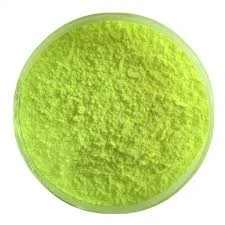Paracetamol The API Pharma Perspective
Paracetamol, also known as acetaminophen, is one of the most widely used analgesics and antipyretics around the globe. It is recognized for its effectiveness in relieving mild to moderate pain and reducing fever, making it a staple in both over-the-counter (OTC) and prescription medications. From its discovery to its application in modern medicine, the role of paracetamol, especially in terms of Active Pharmaceutical Ingredient (API) development and manufacture, is of critical importance in the pharmaceutical industry.
The Importance of Paracetamol as an API
As an API, paracetamol holds a unique position in the pharmaceutical market due to its safety profile and efficacy. It is often preferred over non-steroidal anti-inflammatory drugs (NSAIDs) for patients who may be at risk for gastrointestinal complications or who have contraindications to other analgesics. The WHO recognizes paracetamol as an essential medication, emphasizing its significance on a global scale.
In the context of API production, it is crucial to ensure the highest purity and quality of paracetamol. The production process includes a variety of chemical synthesis methods, with the most common being the nitration of phenol and subsequent reduction. Pharmaceutical companies must adhere to stringent quality control measures to ensure that the paracetamol they produce meets regulatory standards set by organizations such as the FDA and EMA.
Challenges in Paracetamol Production
Despite its widespread use, the production of paracetamol is not without challenges. One of the primary issues is the environmental impact of the synthetic processes involved. The production of chemicals often generates hazardous waste, which can pose risks to both the environment and human health. Consequently, the pharmaceutical industry is increasingly focusing on developing greener processes that reduce waste and utilize more sustainable raw materials.
Another challenge in paracetamol production is the potential for impurities originating from the manufacturing process. These impurities can impact the safety and efficacy of the final product. Therefore, companies that manufacture paracetamol have adopted advanced analytical techniques, such as high-performance liquid chromatography (HPLC) and gas chromatography-mass spectrometry (GC-MS), to detect and quantify any contaminants during the production process.
paracetamol api pharma

Innovations in Paracetamol Formulation
In addition to production challenges, the formulation of paracetamol is also a critical area of research and development. While traditional formulations include tablets, capsules, and liquid forms, pharmaceutical companies are continually exploring new delivery methods to enhance patient compliance and treatment outcomes. Innovations such as effervescent tablets, orally disintegrating films, and transdermal patches are being developed to cater to different patient needs.
Moreover, there is ongoing research into combination therapies that incorporate paracetamol with other medications to provide more robust pain relief. For example, paracetamol is often combined with opioid medications in cases of severe pain, creating a more effective analgesic effect while reducing the required dosage of opioids.
Regulatory Considerations
Regulation is another critical aspect of the API pharma landscape surrounding paracetamol. Given its widespread use, regulatory agencies impose strict guidelines and standards to ensure the safety and efficacy of paracetamol-containing products. Companies must engage in rigorous testing and documentation to prove that their products meet these standards before they can enter the market.
Additionally, the global nature of pharmaceutical supply chains introduces complexities regarding regulatory compliance. Companies operating internationally must navigate different regulatory environments, which can vary significantly in terms of approval processes and quality standards. This necessitates a thorough understanding of global regulations, along with proactive engagement with regulators.
Conclusion
As a vital Active Pharmaceutical Ingredient, paracetamol continues to play an essential role in healthcare across the globe. Its effectiveness, safety, and versatility make it a first-line treatment for pain and fever, while ongoing innovations in production and formulation promise to enhance its application in medicine. However, the challenges associated with its production, regulation, and formulation must be addressed to ensure that paracetamol remains a safe and effective option for patients. Through continued research and development, the pharmaceutical industry is well-positioned to navigate these challenges, ensuring that paracetamol retains its place as an invaluable tool in our healthcare arsenal.

